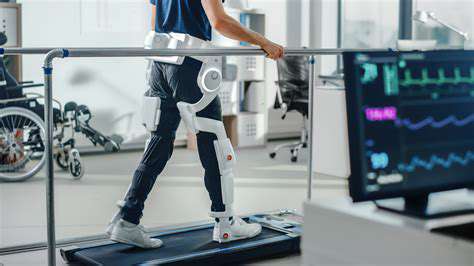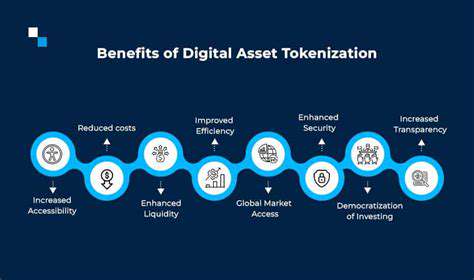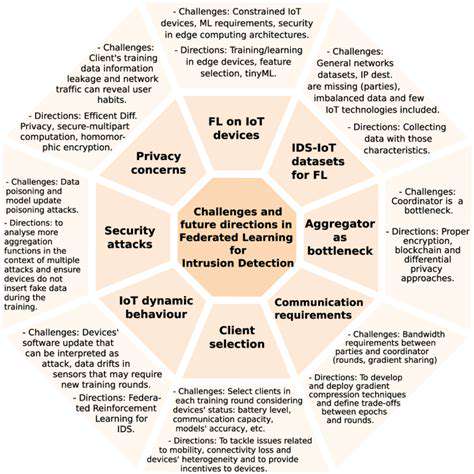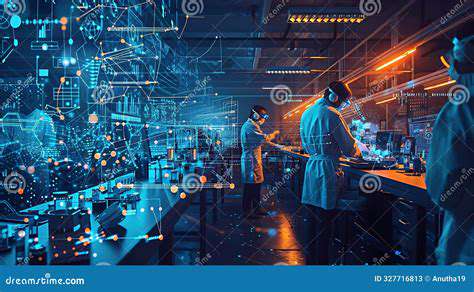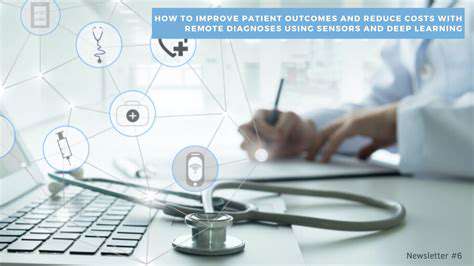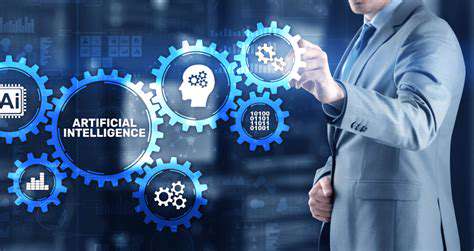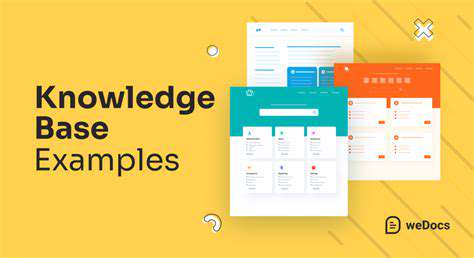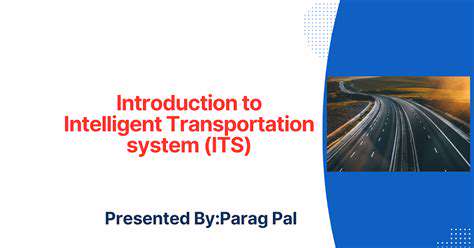
Real-Time Traffic Management and Optimization
Real-time Data Collection and Integration
Modern intelligent transport systems (ITS) rely heavily on real-time data collection from various sources, including sensors embedded in roads, traffic cameras, GPS data from vehicles, and even social media feeds. This data, encompassing speed, volume, location, and incident reports, forms the foundation for effective traffic management. Integrating these disparate data streams into a unified platform is a crucial step towards achieving comprehensive understanding of the current traffic situation and predicting future trends. Effective integration requires robust data processing and standardization techniques to ensure accuracy and reliability of the information shared between different systems.
The accuracy and reliability of the data are paramount. Inaccurate or inconsistent data can lead to flawed predictions and ineffective optimization strategies. This underscores the need for robust data validation and cleansing processes to identify and correct errors, ensuring the data used for traffic management decisions is precise and trustworthy.
Predictive Modeling and Traffic Forecasting
Advanced algorithms and machine learning models are essential for analyzing real-time traffic data and predicting future traffic patterns. This predictive capability allows traffic management centers to anticipate congestion hotspots and proactively implement mitigation strategies. Sophisticated models can account for various factors, including weather conditions, time of day, events, and historical traffic data, resulting in highly accurate forecasts.
These predictive models can identify potential bottlenecks and congestion points well in advance, enabling proactive interventions. This proactive approach is far more effective than reactive measures, as it allows for preemptive adjustments to traffic flow, minimizing delays and improving overall efficiency.
Dynamic Traffic Signal Control
Real-time traffic management systems often incorporate dynamic traffic signal control, which adjusts signal timings based on real-time traffic conditions. This adaptive approach optimizes traffic flow by green-lighting intersections as needed, reducing delays and improving overall efficiency. These systems learn and adapt to changing conditions, ensuring seamless traffic flow and minimizing congestion.
Route Guidance and Navigation Systems
Intelligent transport systems provide real-time route guidance and navigation through various channels, including mobile applications and in-vehicle infotainment systems. These systems utilize traffic data to suggest alternative routes, minimize travel time, and avoid congestion. This real-time information empowers drivers with the knowledge to make informed decisions, leading to reduced travel times and improved fuel efficiency.
Route guidance systems can be further enhanced by incorporating factors beyond traffic conditions, such as weather forecasts, construction zones, and even potential accident risks, providing a comprehensive and holistic view of the travel environment.
Incident Management and Response
Real-time traffic management systems play a critical role in incident management. Systems can quickly detect and respond to incidents like accidents, road closures, or breakdowns. This includes disseminating alerts to drivers through various channels, rerouting traffic, and coordinating emergency response teams.
The ability to quickly identify and address incidents is crucial in minimizing disruptions and ensuring safety on the road. By enabling quicker response times, these systems can dramatically reduce the impact of incidents on overall traffic flow.
Congestion Management and Mitigation Strategies
Identifying and mitigating congestion proactively is a key element of real-time traffic management. Systems can analyze traffic patterns and pinpoint areas prone to congestion. This allows traffic management centers to implement strategies such as adjusting speed limits, implementing variable message signs, and adjusting signal timings to alleviate congestion before it becomes a significant issue.
Effective congestion management strategies also involve utilizing alternative transportation options, encouraging ridesharing, and promoting the use of public transportation. Implementing these measures can reduce the overall strain on the road network and improve traffic flow.
Evaluation and Optimization of Traffic Management Strategies
Continuous monitoring and evaluation of implemented traffic management strategies are essential to ensure effectiveness and identify areas for improvement. Data analysis provides insights into the performance of different strategies, allowing for adjustments and refinements to optimize traffic flow. Real-time feedback loops are crucial for fine-tuning the system and ensuring it remains relevant to the constantly evolving traffic patterns.

Enhancing Public Transportation Systems with ITS
Improving Efficiency and Reliability
Intelligent Transport Systems (ITS) play a crucial role in enhancing the efficiency and reliability of public transportation systems. By integrating various technologies, such as real-time tracking, dynamic routing, and advanced traffic management systems, ITS can optimize service delivery. This leads to more predictable schedules, reduced delays, and a more reliable experience for commuters. Furthermore, the data collected by these systems can be analyzed to identify patterns and bottlenecks, allowing for proactive adjustments and improvements in the overall system performance.
The ability to track vehicles in real-time enables passengers to monitor the location and estimated arrival time of their chosen mode of transportation. This real-time information empowers them to make informed decisions about their travel plans, leading to a more convenient and user-friendly experience. Such improved reliability contributes significantly to the overall attractiveness of public transport options, potentially attracting more users and reducing reliance on private vehicles, thus contributing to environmental sustainability.
Enhancing Safety and Security
Integrating ITS technologies can significantly enhance safety and security within public transportation systems. Advanced safety features, such as automatic emergency braking systems and collision avoidance technologies, can reduce the risk of accidents. Additionally, the use of surveillance systems and security monitoring tools can help deter crime and improve safety for passengers and staff. This heightened sense of security further contributes to the positive perception of public transportation, making it a safer and more appealing option for users.
The implementation of closed-circuit television (CCTV) systems and other security measures, combined with data analysis capabilities, allows for quicker identification and response to incidents. This proactive approach to security not only protects passengers and staff but also fosters a more secure and trustworthy environment for the entire public transport system. Improved safety features and security measures are vital for building public trust and confidence.
Optimizing Resource Allocation and Cost Management
ITS solutions enable better resource allocation and cost management within public transportation systems. Through optimized routing algorithms and real-time traffic data analysis, ITS can help optimize the deployment of vehicles and personnel. This leads to more efficient use of resources, reducing operational costs and maximizing the return on investment for the transportation system. By streamlining operations and reducing inefficiencies, ITS can significantly contribute to the long-term financial sustainability of public transport networks.
The ability to predict demand and adjust service accordingly through real-time data analysis allows for optimized resource allocation. This includes adjustments to bus routes, train schedules, and the frequency of service based on current ridership patterns. Such adaptability translates into significant cost savings and reduces operational waste, enhancing the overall efficiency and cost-effectiveness of the transportation system.
Future Trends and Challenges in ITS Development
Autonomous Vehicle Integration
The integration of autonomous vehicles (AVs) into existing ITS infrastructure is a significant future trend. AVs promise to revolutionize transportation by improving safety, efficiency, and accessibility. This integration will require significant changes to infrastructure, including dedicated lanes, communication networks, and advanced sensor systems. Successfully integrating AVs will also necessitate new regulations and standards to ensure safety and security in shared transportation environments.
Addressing the challenges of integrating AVs with traditional vehicles and human drivers is crucial. This includes developing robust communication protocols between AVs and other vehicles, establishing standardized safety protocols, and creating effective methods for managing mixed traffic flows. A successful integration will depend on effective collaboration between various stakeholders, including policymakers, technology developers, and the public.
Data-Driven Optimization
Leveraging vast amounts of data generated by ITS systems will be essential for optimizing traffic flow and resource allocation. Real-time data analysis can predict congestion patterns, identify bottlenecks, and dynamically adjust traffic signals and routing algorithms. This data-driven approach will enhance the efficiency and responsiveness of ITS systems, leading to significant reductions in travel time and fuel consumption.
Furthermore, the collection and analysis of data related to driver behavior, vehicle performance, and environmental factors will enable the development of more sophisticated models for predicting and mitigating potential issues. This advanced data analysis will provide valuable insights for urban planning and infrastructure development, leading to more sustainable and resilient transport systems.
Enhanced Mobility for Vulnerable Users
Future ITS developments must prioritize the mobility needs of vulnerable road users, including pedestrians, cyclists, and people with disabilities. Intelligent systems can provide real-time information about traffic conditions, pedestrian crossings, and bicycle routes, improving safety and accessibility for these groups. Integrating smart traffic signals that prioritize pedestrian crossings can significantly enhance the safety and efficiency of shared urban spaces.
Cybersecurity and Resilience
As ITS systems become increasingly interconnected and reliant on digital technologies, cybersecurity threats pose a significant challenge. Protecting these systems from malicious attacks and ensuring their resilience in the face of disruptions is paramount. Robust cybersecurity measures, including encryption protocols, intrusion detection systems, and regular security audits, are crucial to maintaining the integrity and reliability of ITS data and operations.
Sustainable Transportation Solutions
Future ITS developments should focus on promoting sustainable transportation solutions. This includes integrating electric vehicles, promoting shared mobility services, and implementing strategies to reduce carbon emissions. ITS systems can play a crucial role in managing charging infrastructure for electric vehicles, optimizing routes for shared mobility services, and implementing intelligent traffic management strategies that reduce emissions. This will contribute to a more environmentally friendly and sustainable transportation landscape.
Integration of Emerging Technologies
The integration of emerging technologies, such as the Internet of Things (IoT), artificial intelligence (AI), and machine learning, will be crucial for advancing ITS capabilities. IoT devices can collect real-time data from various sources, enabling more accurate traffic predictions and improved control of traffic signals. AI and machine learning algorithms can be used to analyze this data and optimize traffic flow, enhance safety, and personalize transportation experiences. The continued innovation in these areas will be vital to the advancement and implementation of intelligent transport systems.

